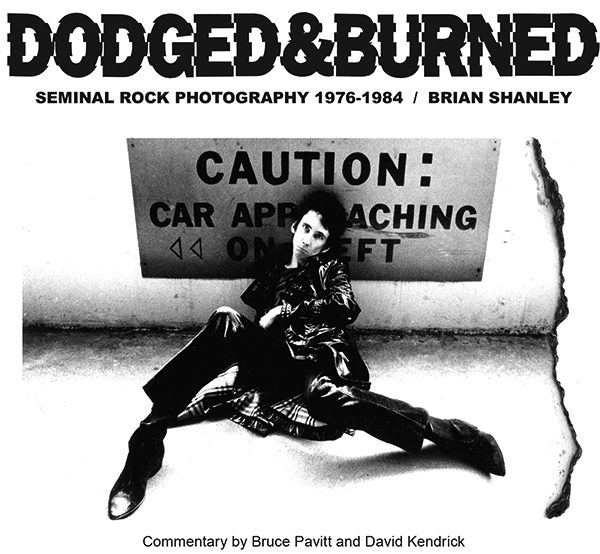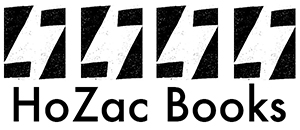
The all-seeing Eye of Mac Blackout knows no visible boundary. After a solid 25+ years of neurotically-enthralling creativity across several media types, he finally has a book to show for all of his exciting and enduring hard work.
Around Chicago, his art has become inescapable, always peeking out from a storefront, a doorway, an alley, or one of his beloved garbage cans, his aesthetic has become an unofficial pock mark on the face of the city. But that’s only what you can see on the surface, as the tone gets darker the deeper you dig into his cadre of nightmarish delights, depicting the spectrum between twisted daydreams and fantastic exaggeration. Mac truly creates the demons you WANT around you, adding strange comfort to the mayhem and fear they would normally invoke. Madman’s Eye may be Mac Blackout’s first art book, but we’d wager it will not be his last.
As his direction has drifted across so many projects over the years, he’s gone from respected graffiti artist, into the world of fine art, and into pen & ink, collage, & multi-media painting. Not to mention his numerous world-renowned punk bands, Functional Blackouts, Daily Void, Mickey, New Rose Alliance, and his solo material with Mac Blackout Band, Mac has always been at the center of a rogue nervous system that needed to come to life on it’s own in the form of his art. The incredible resourcefulness and raw talent are impossible to ignore here, and his work is already instantly recognizable. This book epitomizes his deft ability to conquer a multitude of impressively disturbing, yet incredibly interconnected styles, along with deeper look into the Madman behind the Eye.
– Todd Novak (Hozac Books)

——–
I came to know Mac Blackout in 2000 at a Clone Defects show at one of the most wondrous places on earth, the long defunct Pop’s on Chicago. It was a smelly, dark, and lawless dive bar that hosted a lot of great shows around that time. Mac had just transplanted from Indianapolis to Chicago, a young, wild, and wide-eyed youth. Mac would soon form The Functional Blackouts with a couple of mutual friends, who arrived on the Chicago music scene with great timing. There was a lot going on at the time, and “Garage Rock” was becoming all the rage, and like a pack of ravenous wolves in a field of fresh meat, The Functional Blackouts tore though the scene, and left only bones in their wake. Their songs were as feral, unhinged, and vociferous as their live shows, and the flyers Mac was doing were a perfect reflection of what The Functional Blackouts were about. Mostly photocopied, mixed-media, Whiteout, marker, pen and collage, they were far beyond the lexicon of show flyers anyone was used to seeing. Their imagery was dark and cultish, and had menacing allure that demanded attention and insured attendance. They were dangerous and fun, simultaneously, ––a theme that has played out in Mac’s artwork throughout the years.
It quickly became clear that Mac is a force that could not me tamed. He is a maniac, a hurricane of creativity. As the front guy in Daily Void, then later with the beloved Mickey, and the Mac Blackout Band, Mac stands as one of the most prolific and formidable dudes around. All the while, his constant whirlwind of creative output was unrelenting. For Mac, there wasn’t this type of art, or that type of art, it was all the same to him. His brilliantly painted boomboxes are playful, neurotic, and vivid, painted with perfect execution. The detail on each unique boombox goes from hyper-real, to cartoonish and psychedelic. While the styles depicted in the art throughout his career are far-reaching, be it music, visual art, or whatever he is cooking up, his pace never seems to waver. Take his “stump toppers,” plywood, trace-cut, and painted into colorfully-twisted characters, then drilled to the top of dead tree stumps. There was a time when they were everywhere in the parkways of Chicago’s near northwest side, along with his trash paintings too. A personified, spray-painted, discarded pillow stained with years of sweat, or a discarded hamper turned it into a joyful crazy-eyed lunatic cartoon, that is now more charming and brilliant than is was as a piece of trash. To Mac Blackout, everything is art. There is no line between art and life, one without the other cannot exist on the plane in which we reside. Mac Blackout is a beacon that reminds us of that beautiful and reassuring fact.
– Brett Cross (Hozac Books)


—————————–
“The Faces, shapes, lips, eyes and ears! “Classic looking work, a timeless outsider hero, deranged and prolific.” “Very few can do this in such mad variety, colossal, chaotic, color for a new psychedelic age!”
– TIMMY VULGAR (Clone Defects, Human Eye, Timmy’s Organism)




—————-
CHECK OUT the Mac Blackout official site to buy original art right here
CHECK OUT a Mac Blackout feature on The Culture Trip right here
CHECK OUT a Mac Blackout feature on Columbia College’s In The Loop right here
CHECK OUT a Mac Blackout feature in THE CHICAGO READER right here
HZB-006
1st edition of 300
240 Pages, Full color monograph
ISBN: 978-0-9963319-4-4
————————–
Shipping December 8th, 2017

back to Hozac Records Store

































